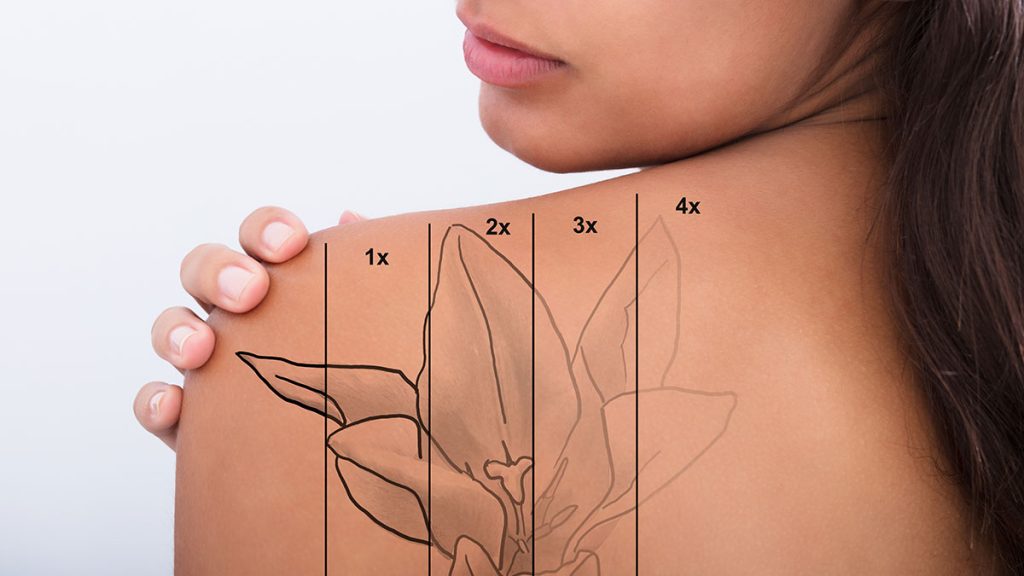
Κάνατε τατουάζ συνειδητά ή ήταν μια παρόρμηση της στιγμής; Όποια κι αν ήταν η αφορμή δεν σημαίνει ότι θα πρέπει να ζήσετε για πάντα μ’ αυτό αν το έχετε μετανιώσει. Διαβάστε πως μπορείτε να αφαιρέστε το τατουάζ χωρίς πόνο και τραυματισμό.
External appearance has always concerned men and women. Since the formation of the first societies, people wanted in every possible way to stand out and differentiate themselves from the whole. And tattoos may have become fashionable in the last 15 years, but they are perhaps the oldest “adornment” of the human body.
The first tattoos date back to 2000 BC, after the mummies of Nubia (region between southern Egypt and northern Sudan) bore tattoo marks. With the expansion of the Egyptian empire, the art of tattooing spread to Crete, Persia and Arabia, and then throughout the world.
The first electric tattoo machine, which was based on Thomas Edison’s electric tool that pierced paper with a needle, was made in 1981. With the new technology, tattooing became accessible to everyone. Today, it is estimated that 12% of Europeans have at least one tattoo, i.e. one in four, aged 18-35.
However, the pigments used in tattoos remain on the skin for life, and because of this, experts fear health risks.
In fact, recently the European Chemicals Agency (ECHA) decided to recommend the banning of certain pigments used in tattooing, as the tattoo is called in Greek, considering them harmful to human skin. In particular, ECHA argues that pigments 74160 (Blue No15) and 74260 (Green No7) should no longer be used for tattoos, since their use is also not allowed in cosmetics.
Overall, the European Union’s competent committee has already pointed out that chemicals in tattoo inks pose a cancer risk, and member countries must institute restrictions on the 4,000 chemicals currently used in tattoos.
The EU also expresses its strong concern as there is a lack of controls on the composition of the inks, since they are mixtures of several materials. And while the raw materials are supposed to be strictly controlled, there are no uniform European rules in force.
A study published in 2017 in the scientific journal Scientific Reports showed that pigment particles from tattoo ink reach the lymph nodes. But whether this has long-term effects in terms of causing cancer is not easy to say.
A review published in 2012 in Lancet Oncology found that tattoo-related skin cancers are relatively rare. The researchers examined 50 samples of skin cancers on tattoos and concluded that “the association needs to be studied in depth, although for now it should be considered a coincidence.”
So until the scientific research reaches certain conclusions, the European authorities advise those who wish to get a tattoo to consult experts both before getting a tattoo and in the event that they regretted it and would like to remove it.
According to data from the American Academy of Dermatology, there are not a few people who regret getting a permanent tattoo. 17% of those who have had a permanent tattoo are already thinking about having it removed.
What to watch for safe tattoo removal
It is worth noting that even removing the tattoo from the skin is not without risk as studies have shown that the process carries risks since the breakdown of the chemicals into smaller molecules allows them to move uncontrollably through the body.
Today, the most common techniques used for removal are techniques using so-called picosecond lasers (emitting laser beams in one trillionth of a second), which are superior to all other techniques of the past (surgical techniques or use of older laser technologies) since it ensures the removal of the tattoo in the shortest possible time without the skin showing an image of injury, scar or discoloration.
With the picosecond laser in the majority of cases we have a complete elimination of the tattoo with the skin appearing healthy as before the application of the tattoo. The sessions required vary by body area and also depend on the age, color of the tattoo and the phototype of the patient.
It is worth noting that while today we encounter more and more colorful and complex tattoos, the inks of which are more and more resistant, the picosecond laser achieves the desired result with fewer treatments, less energy and without injuries to the adjacent skin tissues.
So there are no risks for the skin, while the small local irritation observed during the removal of the tattoo subsides after 2-3 days.
After the application of the picosecond laser, exposure to the sun should be avoided, the use of very tight clothing that may cause friction in the area, and a moisturizing cream should be used in the area where the tattoo was removed.
In conclusion, picosecond laser technology offers a clear solution to tattoo removal and in combination with fractional laser technologies help faster tattoo elimination and better skin quality.
*Mr. Eleftherios Dimitradiou is a Plastic and Reconstructive Surgeon, Scientific Manager of the plastic surgery clinics “Luxurious Medical Aesthetics and Plastic Surgery” – Central Clinic of Athens.
Source: Interview of Eleftherios Dimitradios at ygeiamou.gr

